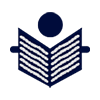


26 Feb 2025
// ENDPTS
https://endpts.com/boehringer-ingelheim-wins-jury-verdict-in-zantac-retrial-in-illinois/

26 Jul 2024
// REUTERS
https://www.reuters.com/legal/litigation/column-does-motive-matter-mass-action-venue-fights-2024-07-25/

01 Jul 2024
// FIERCE PHARMA
https://www.fiercepharma.com/pharma/gsk-takes-one-zantac-personal-injury-case-its-plate-settlement-illinois

20 Jun 2024
// REUTERS
https://www.reuters.com/legal/industry-groups-back-drugmakers-appeal-zantac-cancer-lawsuits-2024-06-20/

01 Jun 2024
// PRESS RELEASE
https://www.sanofi.com/en/media-room/press-releases/2024/2024-06-01-02-39-22-2891788

24 May 2024
// Kevin Dunleavy FIERCE PHARMA
https://www.fiercepharma.com/pharma/first-zantac-trial-gsk-boehringer-ingelheim-gain-key-victory